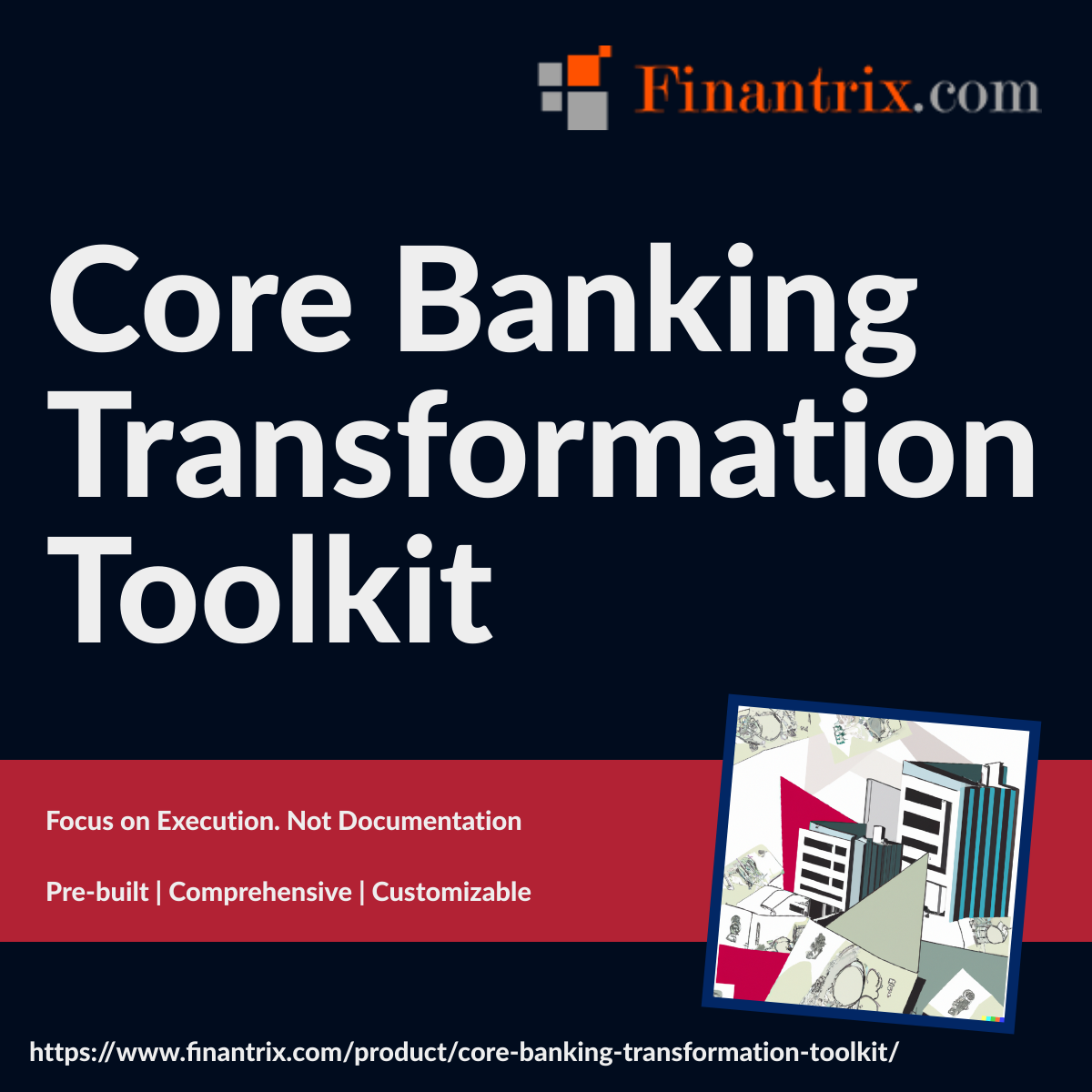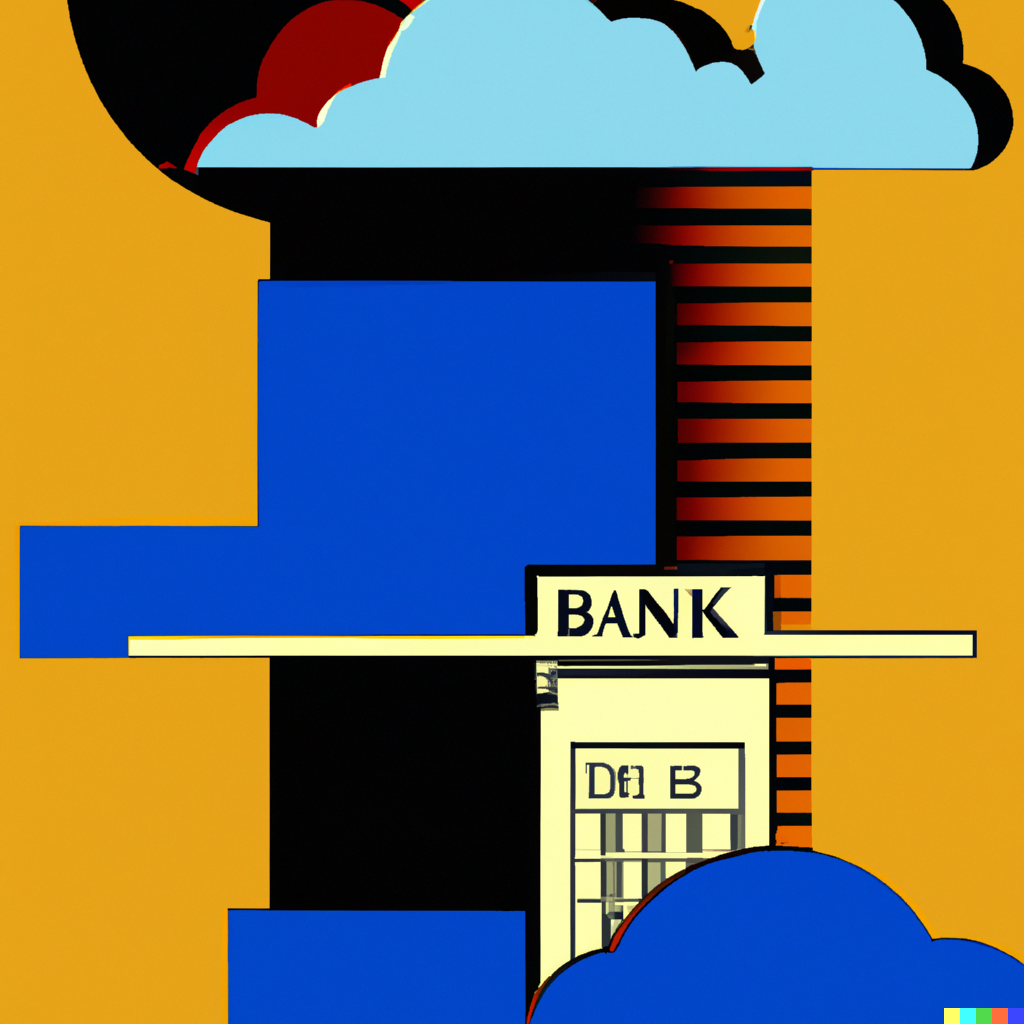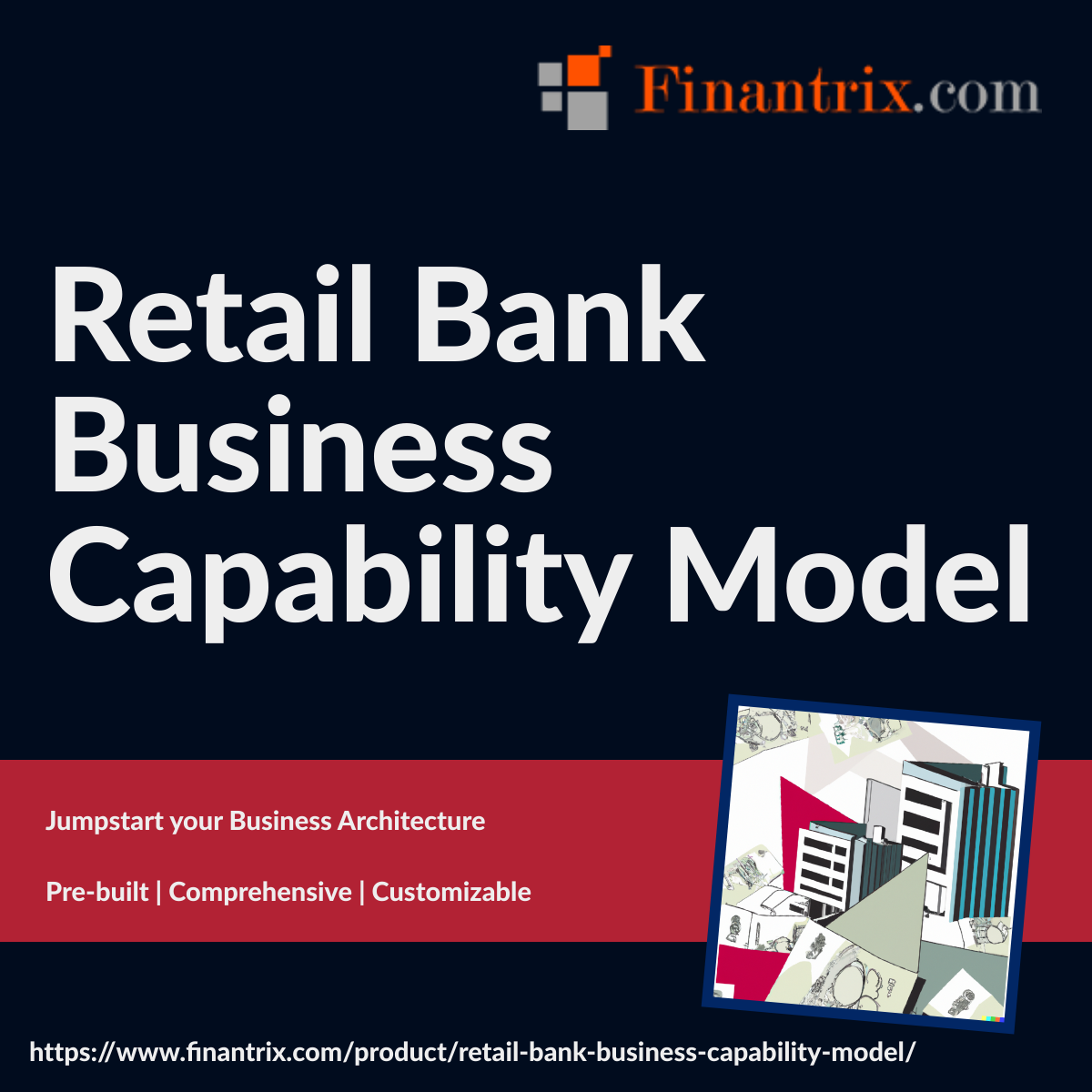
Core Banking in the Cloud – It’s a cloudy future.
Core banking refers to a centralized system allowing customers to conduct their banking activities across various branches globally. This concept is based on the principle that all the bank’s branches have access to customer data, allowing transactions to occur from any branch. Services such as withdrawals, deposits, loan processing, customer information, interest calculation, and other critical banking operations are all part of the core banking system. It is a banking organization’s backbone, enabling seamless customer service and streamlined operations.
Cloud Computing
Cloud computing represents a significant shift in how technology is obtained, used, and managed. It offers on-demand network access to shared pools of configurable computing resources that can be rapidly provisioned and released with minimal effort. This model delivers computing services—servers, storage, databases, networking, software, analytics, artificial intelligence, and more—over the Internet (“the cloud”). Notably, it provides flexible resources and economies of scale, eliminating the need for heavy investments in local infrastructure.
The Evolution of Core Banking in the Cloud
 The digital revolution has untouched no industry, and banking is no exception. The idea of marrying core banking with cloud technology directly responds to the need for increased operational efficiency, cost-effectiveness, and improved customer service in the banking sector. Banks, faced with the challenge of updating their legacy systems to meet modern demands, have started to recognize the cloud as a solution that combines agility, scalability, and cost savings.
The digital revolution has untouched no industry, and banking is no exception. The idea of marrying core banking with cloud technology directly responds to the need for increased operational efficiency, cost-effectiveness, and improved customer service in the banking sector. Banks, faced with the challenge of updating their legacy systems to meet modern demands, have started to recognize the cloud as a solution that combines agility, scalability, and cost savings.
A continual quest has marked the journey of core banking from mainframes to the cloud for increased resilience, greater efficiency, and the capability to deliver innovative services. The onset of cloud computing technology has radically reshaped the banking landscape, allowing banks to restructure their architectures, simplify complex systems, and provide services in a more customer-centric manner.
The evolution of core banking in the cloud is more than a mere technological shift; it’s a strategic transformation that can redefine how banks operate and engage with their customers.
The Emergence of Cloud-Based Banking
Fundamental Forces Driving Banks to the Cloud
Multiple forces are driving the banking industry towards adopting cloud-based solutions, and these can broadly be categorized into business and technology drivers.
On the business front, the escalating customer expectations for seamless, on-demand, and personalized banking services are compelling banks to reimagine their service delivery methods. The competitive pressure from FinTech startups, which leverage advanced technologies to deliver innovative solutions, pushes traditional banks to accelerate their digital transformation initiatives. Moreover, the quest for operational efficiency, cost optimization, and scalability in the rapidly evolving financial ecosystem is leading banks to embrace the cloud.
Technological drivers primarily revolve around the maturation and availability of cloud technologies that offer superior capabilities to traditional on-premises infrastructures. The proven reliability, security, and scalability of cloud platforms and their ability to seamlessly integrate with modern technologies like AI, machine learning, and data analytics attract banks towards cloud adoption.
Advantages of Moving Core Banking to the Cloud
Moving core banking systems to the cloud comes with a plethora of benefits. Here are some key advantages:
- Scalability: Cloud platforms offer unlimited scalability, enabling banks to quickly ramp up or down based on demand, ensuring optimal resource utilization.
- Cost Savings: The shift from CAPEX to the OPEX model reduces upfront infrastructure costs, and banks only pay for the resources they use.
- Innovation and Agility: With easy access to advanced technologies, banks can innovate faster, launch new products, and improve customer service. The cloud also enables rapid response to market changes.
- Operational Efficiency: Cloud-based banking eliminates the need for manual and redundant tasks, streamlining operations and improving productivity.
- Security and Compliance: Leading cloud service providers offer robust security features and help banks comply with evolving regulatory requirements.
Case Studies: Early Adopters of Cloud-Based Core Banking
Case Study 1: Capital One
Capital One, an American bank holding company, is a prime example of an early adopter of cloud-based core banking. Recognizing the potential of the cloud, Capital One embarked on its cloud journey in 2015. It has successfully migrated its core banking applications to AWS (Amazon Web Services) to leverage the cloud’s scalability, resilience, and security, thus improving customer experience and reducing costs.
Case Study 2: BBVA
BBVA, a multinational Spanish banking group, partnered with Google Cloud in 2011 to embark on its cloud transformation journey. Leveraging Google’s cloud technology, BBVA could revamp its technology infrastructure to become more agile, innovative, and customer-centric. By moving to the cloud, BBVA has witnessed significant enhancements in operational efficiency and speed to market for new banking services.
These cases represent the successful migration of core banking to the cloud, setting a precedent for other banking institutions considering a similar shift. They have leveraged the cloud to deliver more efficient, customer-friendly, innovative banking solutions while maintaining rigorous security and regulatory compliance.
Understanding Cloud-Based Core Banking Technologies
Key Technologies: SaaS, IaaS, and PaaS
 Three main cloud service models are critical to understanding when exploring cloud-based core banking – Software as a Service (SaaS), Infrastructure as a Service (IaaS), and Platform as a Service (PaaS).
Three main cloud service models are critical to understanding when exploring cloud-based core banking – Software as a Service (SaaS), Infrastructure as a Service (IaaS), and Platform as a Service (PaaS).
- SaaS: This model allows banks to use software applications as a service available over the Internet. SaaS vendors manage the software application and underlying infrastructure and handle maintenance, such as upgrades and security patching. Banks can access these services on demand without worrying about installation or upkeep. Examples include customer relationship management (CRM) systems, human resources management systems, and financial applications.
- IaaS: IaaS provides virtualized computing resources over the Internet. It is an instant computing infrastructure, provisioned and managed over the Internet. Banks can rent servers, storage space, and network hardware rather than purchasing and managing physical data centers and servers. This model offers flexibility, scalability, and cost-effectiveness.
- PaaS: PaaS provides a platform for developers to build, test, and deploy applications. It supplies an on-demand environment for developing, testing, and managing software applications. For banks, PaaS can streamline workflows as they develop their proprietary software applications, including AI and machine learning models.
Integration of Existing Systems with Cloud Services
Integrating existing systems with cloud services can be a complex task. The challenge lies in ensuring seamless integration while maintaining data security and compliance. Banks need to adopt a systematic approach, which includes a detailed audit of existing systems, mapping dependencies, and understanding data flows. Modern cloud services offer robust integration capabilities with APIs and microservices, which can facilitate the integration process. Banks can opt for a hybrid approach, where specific components remain on-premise while others move to the cloud, ensuring a seamless transition.
Security and Compliance in Cloud Technologies
Security is a paramount concern in the banking industry, and the cloud is no exception. However, major cloud service providers offer robust security features, including encryption, multi-factor authentication, firewalls, intrusion detection systems, and more.
On the compliance front, service providers ensure adherence to industry standards such as PCI DSS for card transactions and GDPR for data protection. They also provide features like activity logs and audit trails to monitor and report on activities.
However, banks need to ensure that they clearly understand the “shared responsibility model” in cloud security, where the service provider provides the security “of” the cloud. At the same time, customers are responsible for security “in” the cloud.
AI and Machine Learning Capabilities in Cloud-Based Banking
Integrating AI and machine learning with cloud banking is reshaping the banking sector. These technologies allow banks to derive actionable insights from their vast data reserves.
AI and machine learning can help banks improve customer service through personalized offerings, chatbots, and predictive analytics for behavior patterns. They can streamline operations by automating repetitive tasks, detecting fraudulent activities, and enhancing risk management. By leveraging the cloud’s scalability, banks can develop, train, and deploy AI and machine learning models more efficiently and cost-effectively.
The Strategic Business Implications of Cloud-Based Core Banking
Impact on Operational Efficiency
Cloud-based core banking can significantly enhance operational efficiency. The on-demand nature of cloud services eliminates the need for banks to maintain and update their IT infrastructure continuously, allowing them to focus on their core business operations. With cloud services, providers handle routine tasks such as server maintenance, software updates, and security management, freeing up valuable IT resources. Cloud also offers high scalability, enabling banks to adjust their resources based on demand, avoiding over-provisioning or under-utilization.
Enhancing Customer Experience
Customer expectations in the banking industry have evolved in the digital age. They now demand personalized, on-demand, and seamless banking experiences. Cloud-based core banking can meet these demands by enabling anytime, anywhere banking services. Additionally, integrating the cloud with advanced technologies like AI and machine learning allows for personalized banking experiences, from product recommendations to customer support. The cloud also provides powerful data analytics tools, helping banks understand customer behavior better and offering services tailored to their needs.
Enabling Innovation and Agility
Innovation and agility are critical competitive advantages in today’s fast-paced banking industry. Cloud-based core banking fosters these attributes by offering quick and easy access to the latest technologies, such as AI, machine learning, and big data analytics. Banks can rapidly test new features and services with the cloud, responding swiftly to market trends and customer demands. Furthermore, the cloud’s scalability allows banks to experiment without significant upfront investments, fostering a culture of innovation.
Cost Implications: CAPEX to OPEX
Cloud-based core banking has significant cost implications. It shifts a bank’s technology expenditure from a Capital Expenditure (CAPEX) model to an Operational Expenditure (OPEX) model. In the CAPEX model, banks make substantial upfront investments in infrastructure and software, which are then depreciated over time. In contrast, the OPEX model, typical in cloud services, involves periodic payments for services used. This shift provides several benefits: it reduces upfront costs, makes expenses predictable, and allows for the scaling of resources based on demand, leading to efficient resource utilization and cost savings.
Critical Challenges in Migrating Core Banking to the Cloud
Data Security and Privacy Concerns
 Data security ranks at the top of the list of challenges for banks considering a move to the cloud. Banks handle sensitive customer information, and any breach could have serious consequences. While cloud providers invest significantly in security, banks must thoroughly understand their part in the shared responsibility model to protect their data. Privacy is another concern, particularly with regulations like GDPR requiring strict control and protection of personal data. Banks must ensure that their cloud service providers can offer the data privacy required by their jurisdiction.
Data security ranks at the top of the list of challenges for banks considering a move to the cloud. Banks handle sensitive customer information, and any breach could have serious consequences. While cloud providers invest significantly in security, banks must thoroughly understand their part in the shared responsibility model to protect their data. Privacy is another concern, particularly with regulations like GDPR requiring strict control and protection of personal data. Banks must ensure that their cloud service providers can offer the data privacy required by their jurisdiction.
Regulatory Compliance
Banks operate in a heavily regulated environment, and moving to the cloud does not exempt them from compliance with these regulations. Issues like data residency, where data is stored in the cloud, can pose a compliance challenge. Additionally, regulations may dictate the level of security controls, auditability, and data protection measures that need to be in place. Banks must ensure they work with cloud providers who understand these requirements and can help them remain compliant.
Technological Integration and Legacy System Challenges
Many banks operate legacy systems that may not be readily compatible with cloud technologies. Integrating these systems with the cloud without disrupting ongoing operations can be complex. Furthermore, banks may also have multiple disparate systems that need to communicate with each other, adding another layer of complexity to the integration process. A well-planned, phased migration strategy, possibly involving hybrid cloud models, can help address these challenges.
Change Management and Organizational Resilience
Moving core banking to the cloud is not just a technological shift—it’s an organizational one. It requires a significant change in how banks operate, impacting people, processes, and technology. Banks must manage this change effectively, providing their employees with the necessary training and support. Organizational resilience is another concern, as banks must ensure that their operations can quickly recover and continue in the face of disruptions during and after the migration process. Effective change management and resilience planning are essential to transition to cloud-based core banking successfully.
Overcoming the Challenges: A Roadmap for Successful Migration
Strategic Planning and Partner Selection
 The migration to cloud-based core banking begins with strategic planning. Banks need to understand their current technological landscape, define their goals for cloud adoption, and map out a clear strategy for achieving these goals. This strategy should include a timeline, resource allocation, and critical milestones.
The migration to cloud-based core banking begins with strategic planning. Banks need to understand their current technological landscape, define their goals for cloud adoption, and map out a clear strategy for achieving these goals. This strategy should include a timeline, resource allocation, and critical milestones.
Partner selection is a crucial part of this planning phase. Banks need to carefully select their cloud service providers, considering factors such as their experience in the banking industry, understanding of regulatory requirements, security capabilities, and the services they offer. The right partner can provide valuable guidance and support throughout the migration process.
Risk Management and Compliance Strategies
Effective risk management is crucial to address cloud migration’s security and compliance challenges. Banks should conduct a thorough risk assessment, identifying potential security threats and vulnerabilities and implementing measures to mitigate these risks.
Compliance strategies should ensure adherence to all relevant regulations. Banks should work with their cloud service providers to understand how data is stored, processed, and protected in the cloud and ensure that these processes comply with regulatory requirements.
Implementing a Phased Approach
A phased approach can help overcome the challenges associated with technological integration and legacy systems. Instead of migrating all systems simultaneously, banks can move them one at a time or in small groups, starting with less critical systems. This approach allows banks to learn and adapt as they go, minimizing the impact of any issues. It also provides time for employees to get accustomed to the new system, reducing resistance to change.
Continuous Monitoring and Optimization
Once the migration is complete, the work is not over. Banks must continuously monitor their cloud-based systems, ensuring they operate effectively and securely. They should regularly review performance metrics, identify areas for improvement, and implement necessary optimizations.
In terms of security, continuous monitoring can help detect and respond to threats in real-time. Banks should regularly review and update their security measures to address evolving threats.
By following this roadmap, banks can successfully navigate the challenges of migrating their core banking systems to the cloud, unlocking this technology’s numerous benefits.
Future Trends in Cloud-Based Core Banking
Impact of Emerging Technologies (e.g., Blockchain, 5G)
Emerging technologies like blockchain and 5G will profoundly impact cloud-based core banking. Blockchain can enhance security, transparency, and efficiency. Its distributed ledger technology is poised to revolutionize transactions, reduce fraud, and streamline interbank transfers in the cloud banking space.
5G, on the other hand, will drive faster data speeds and lower latency. This can significantly enhance mobile banking experiences, support the real-time processing needs of modern banking, and enable more seamless and efficient use of cloud resources. These technologies can deliver more secure, efficient, and customer-centric banking services combined with cloud-based core banking.
Role of the Cloud in the Growth of FinTech
 The growth of FinTech is closely intertwined with cloud technology. As FinTech firms seek to disrupt traditional banking with innovative, customer-centric solutions, they are turning to the cloud for its scalability, flexibility, and access to cutting-edge technologies. Cloud technology enables these companies to develop and deploy new applications and services rapidly.
The growth of FinTech is closely intertwined with cloud technology. As FinTech firms seek to disrupt traditional banking with innovative, customer-centric solutions, they are turning to the cloud for its scalability, flexibility, and access to cutting-edge technologies. Cloud technology enables these companies to develop and deploy new applications and services rapidly.
Furthermore, the cloud enables FinTech firms to achieve significant cost efficiencies, freeing up resources to invest in innovation and growth. As FinTech continues to grow, cloud-based core banking will increasingly become the norm, driving the evolution of the banking industry.
The Future of Hybrid Cloud in Banking
A hybrid cloud, which combines private and public cloud environments, will continue to play a critical role in the future of core banking. A hybrid cloud allows banks to leverage the best of both worlds – they can use the private cloud for sensitive data and critical applications to maintain control and security while using the public cloud for non-sensitive data and applications to gain cost and scalability advantages.
Moreover, a hybrid approach enables banks to gradually transition to the cloud, moving workloads as they see fit and reducing the risks associated with migration. This flexibility makes the hybrid cloud an attractive option for banks and is likely to drive its increased adoption in the future.
Case Studies: Successful Implementations of Cloud-Based Core Banking
A. Large-Scale Banks
Case Study: Capital One
Capital One has been a pioneer in leveraging cloud technology among large banks. It embarked on a multi-year cloud journey in 2015. The bank migrated its applications to the cloud to increase its scalability and flexibility, improve customer experience, and reduce costs.
The bank implemented a cloud-first strategy, ensuring any new software or service it developed was created for the cloud. Capital One also worked closely with its cloud provider to enhance security and meet regulatory requirements. By the end of 2020, Capital One had completely exited its data centers and operated entirely in the cloud, showing a successful large-scale implementation of cloud-based core banking.
B. Midsize Banks
Case Study: Starling Bank
Starling Bank, a UK-based digital-only bank, is a leading example among midsize banks that have successfully adopted cloud-based core banking. Starling, built from the ground up as a mobile bank, chose a cloud-native approach for its core banking system.
The bank used cloud services to deliver fast, secure, customer-centric banking experiences. The cloud-native approach allowed Starling to rapidly provide regular app updates and roll out new features, keeping pace with customer expectations and market trends. The bank’s successful growth and high customer satisfaction levels attest to the effectiveness of its cloud strategy.
C. Small Community Banks and Credit Unions
Case Study: G&F Financial Group
G&F Financial Group, a Canadian credit union, turned to cloud banking to improve its operations and services. They partnered with a cloud-based banking platform to modernize their banking system.
The cloud-based solution provided the credit union with a modern, agile, and flexible banking platform. It enabled faster, more seamless member services and improved back-office efficiencies. Despite being a smaller community-based institution, G&F was able to leverage cloud technology effectively, demonstrating that the benefits of cloud-based core banking are not restricted to larger banks.
The Inevitable Shift Towards Cloud-Based Core Banking
A. Recap of the Benefits and Challenges
 Cloud-based core banking is reshaping the banking industry. The benefits of this shift are compelling—operational efficiency, enhanced customer experience, innovation and agility, and cost-effectiveness. It offers a flexible and scalable model, opening avenues to cutting-edge technologies and allowing banks to adapt to the dynamic demands of the digital era.
Cloud-based core banking is reshaping the banking industry. The benefits of this shift are compelling—operational efficiency, enhanced customer experience, innovation and agility, and cost-effectiveness. It offers a flexible and scalable model, opening avenues to cutting-edge technologies and allowing banks to adapt to the dynamic demands of the digital era.
Nonetheless, moving to the cloud is not without challenges. Data security and privacy concerns, regulatory compliance, technological integration, and managing organizational change persist. However, these challenges can be effectively navigated with strategic planning, risk management, a phased approach to implementation, and continuous monitoring.
B. The Role of Cloud in Transforming the Banking Industry
The cloud’s role in transforming the banking industry is becoming increasingly evident. It accelerates the digital transformation journey of many banks and financial institutions, enabling them to deliver more personalized, convenient, and efficient banking services. The advent of new technologies like AI, machine learning, blockchain, and 5G, combined with cloud-based core banking, is paving the way for more innovative banking solutions.
Moreover, the cloud supports the burgeoning FinTech sector, enabling these disruptive players to rapidly develop and deploy innovative solutions. The cloud is also crucial in adopting hybrid banking models, allowing banks to move at their pace and according to their specific needs.
C. Why Leaders Should Embrace the Cloud
 The shift to cloud-based core banking is inevitable for business and technology leaders. The ongoing digital transformation of the banking industry, evolving customer expectations, and the increasing competitive pressure from FinTech companies make it clear that the future of banking lies in the cloud.
The shift to cloud-based core banking is inevitable for business and technology leaders. The ongoing digital transformation of the banking industry, evolving customer expectations, and the increasing competitive pressure from FinTech companies make it clear that the future of banking lies in the cloud.
The journey may be complex, but the benefits are significant. By embracing the cloud, banks can ensure they are equipped to thrive in the digital era, delivering superior value to their customers and staying competitive in the ever-evolving banking landscape. As leaders in the industry, the time to act is now—embrace the cloud and shape the future of banking.
Cloud-Based Core Banking Software Providers:
- Temenos
-
- Temenos offers a comprehensive suite of software solutions for the financial sector, including cloud-based core banking systems. Their products are designed to promote efficiency and customer satisfaction.
- Website: https://www.temenos.com
- Finastra
-
- Finastra provides various software solutions for the financial industry, with Fusion Phoenix being a popular cloud-based core banking solution. It aims to provide a seamless, modern banking experience.
- Website: https://www.finastra.com
- Mambu
-
- Mambu’s cloud banking platform provides a modern, flexible solution that allows banks to quickly adapt to changing customer needs and market trends. It is designed to be scalable, secure, and easy to integrate.
- Website: https://www.mambu.com
- nCino
-
- nCino’s Bank Operating System is a comprehensive, cloud-based solution that combines CRM, loan origination, deposit accounts, workflow, enterprise content management, business process management, digital engagement, and instant reporting on a single platform.
- Website: https://www.ncino.com
- Avaloq
-
- Avaloq provides a comprehensive, cloud-based core banking solution that aims to streamline operations and promote innovation in financial institutions. It is designed to be highly flexible and customizable.
- Website: https://www.avaloq.com
Cloud Service Providers in the Banking Sector:
- Amazon Web Services (AWS)
-
- AWS offers a comprehensive cloud service suite to help banks build innovative, reliable, secure applications. AWS is trusted by many large financial institutions worldwide.
- Website: https://aws.amazon.com
- Microsoft Azure
-
- Azure provides a range of cloud services, including AI and machine learning capabilities, that can help banks transform their operations. Azure places a strong emphasis on security, compliance, and privacy.
- Website: https://azure.microsoft.com
- Google Cloud
-
- Google Cloud provides cloud services to help banks innovate faster, make data-driven decisions, and provide personalized customer experiences. Google Cloud’s solutions are secure, scalable, and AI-ready.
- Website: https://cloud.google.com
- IBM Cloud
-
- IBM Cloud provides many cloud services, including AI, blockchain, and advanced data analytics. IBM Cloud offers industry-specific solutions, including solutions designed for the banking sector.
- Website: https://www.ibm.com/cloud
- Oracle Cloud
-
- Oracle Cloud offers a complete suite of cloud applications, platform services, and engineered systems. With a focus on scalability, security, and interoperability, it’s a viable choice for banks looking to migrate services to the cloud.
- Website: https://www.oracle.com/cloud

